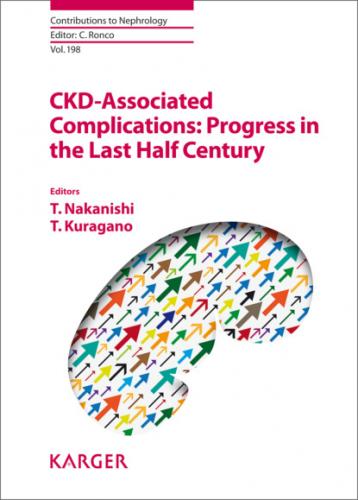Lipectomy and Liposuction
Lipectomy and liposuction are mostly utilized for patients with obesity as a surgical revision to improve routine cannulability. These procedures avoid the tunnel transposition- or elevation-related adverse events attributable to the impairment of the venous wall and configuration or superimposition of the scar. The substantial durability and safety of lipectomy to superficialize the deep arterialized forearm cephalic vein after creation of a radiocephalic fistula were demonstrated by Bourquelot et al. [24] in a single-center prospective study of 49 consecutive patients. Several reports have suggested the feasibility of ultrasound-guided liposuction to reduce the subcutaneous adipose tissue overlying the planned cannulation segments of the AVF, but this procedure is yet to be studied in a large series [25].
Conclusion
Superficialization of the venous part of a fistula is characterized by methodological diversity. Tunnel transposition and elevation are reliable procedures to maximize the availability of a deeply located autologous vein in the constructive process of an alternative form of an AVF, especially a TBBAVF. Elevation as well as lipectomy and liposuction are also utilized in revisional interventions to improve accessibility by approximating the distance from the skin to the arterialized vein.
Both careful assessment of the adaptability of superficialization and adequate comprehension of the inherent advantages and limitations of each superficialization modality will facilitate the optimal construction and maintenance of the alternative autologous AVF. This is especially important in patients who cannot undergo conventional AVF construction or in whom cannulation difficulties are encountered. Utilization of the techniques described here could lead to better outcomes and successful management of HD.
Acknowledgments
The authors thank Mr. H. Kobayashi, Medical Technologist at Central Clinical Laboratory, Kansai Rosai Hospital for his constructive comments and invaluable input.
Disclosure Statement
The authors have no conflicts of interest to disclose.
Funding Source
The authors received no funding for this work.
References
1Biuckians A, Scott EC, Meier GH, Panneton JM, Glickman MH: The natural history of autologous fistulas as first-time dialysis access in the KDOQI era. J Vasc Surg 2008; 47: 415–421.
2National Kidney Foundation Kidney Disease Outcomes and Quality Initiative (NKF-K/DOQI), 2006 update. National Kidney Foundation, Inc., 2006.
3Tordoir JH, Dammers R, de Brauw M: Video-assisted basilic vein transposition for haemodialysis vascular access: preliminary experience with a new technique. Nephrol Dial Transplant 2001; 16: 391–394.
4Akoh JA, Paraskeva PP: Review of transposed basilic vein access for hemodialysis. J Vasc Access 2015; 16: 356–363.
5Dix FP, Khan Y, Al-Khaffaf H: The brachial artery-basilic vein arterio-venous fistula in vascular access for haemodialysis – a review paper. Eur J Vasc Endovasc Surg 2006; 31: 70–79.
6Deguchi J, Sato O: Transposed brachial-basilic arteriovenous fistula for vascular access in Japan. Ann Vasc Dis 2018; 11: 181–190.
7Zielinski CM, Mittal SK, Anderson P, Cummings J, Fenton S, Reiland-Smith J, Frock JT, Dunlay RW: Delayed superficialization of brachiobasilic fistula: technique and initial experience. Arch Surg 2001; 136: 929–932.
8Wang S, Wang MS, Jennings WC: Basilic elevation transposition may improve the clinical outcomes for superficialization of basilic arteriovenous fistula veins. J Vasc Surg 2017; 65: 1104–1112.
9Hossny A: Brachiobasilic arteriovenous fistula: different surgical techniques and their effects on fistula patency and dialysis-related complications. J Vasc Surg 2003; 37: 821–826.
10Bronder CM, Cull DL, Kuper SG, Carsten CG, Kalbaugh CA, Cass A, Watkins T, Taylor SM: Fistula elevation procedure: experience with 295 consecutive cases during a 7-year period. J Am Coll Surg 2008; 206: 1076–1082.
11Weale AR, Bevis P, Neary WD, Lear PA, Mitchell DC: A comparison between transposed brachiobasilic arteriovenous fistulas and prosthetic brachioaxillary access grafts for vascular access for hemodialysis. J Vasc Surg 2007; 46: 997–1004.
12Beaulieu MC, Gabana C, Rose C, MacDonald PS, Clement J, Kiaii M: Stenosis at the area of transposition – an under-recognized complication of transposed brachiobasilic fistulas. J Vasc Access 2007; 8: 268–274.
13Lazarides MK, Georgiadis GS, Papasideris CP, Trellopoulos G, Tzilalis VD: Transposed brachial-basilic arteriovenous fistulas versus prosthetic upper limb grafts: a meta-analysis. Eur J Vasc Endovasc Surg 2008; 36: 597–601.
14Davoudi M, Tayebi P, Beheshtian A: Primary patency time of basilic vein transposition versus prosthetic brachioaxillary access grafts in hemodialysis patients. J Vasc Access 2013; 14: 111–115.
15Jun Yan Wee I, Mohamed IH, Patel A, Choong AMTL: A systematic review and meta-analysis of one-stage versus two-stage brachiobasilic arteriovenous fistula creation. J Vasc Surg 2018; 68: 285–297.
16Kakkos SK, Haddad GK, Weaver MR, Haddad RK, Scully MM: Basilic vein transposition: what is the optimal technique? Eur J Vasc Endovasc Surg 2010; 39: 612–619.
17Korepta LM, Watson JJ, Elder EA, Davis AT, Mansour MA, Chambers CM, Cuff RF, Wong PY: Outcomes for forearm and upper arm arteriovenous fistula creation with the transposition technique. J Vasc Surg 2016; 63: 764–771.
18Inkollu S, Wellen J, Beller Z, Zhang T, Vachharajani N, Shenoy S: Successful use of minimal incision superficialization technique for arteriovenous fistula maturation. J Vasc Surg 2016; 63: 1018–1025.
19Sgroi MD, Patel MS, Wilson SE, Jennings WC, Blebea J, Huber TS: The optimal initial
